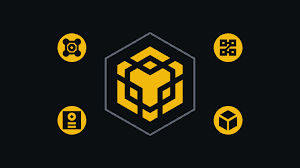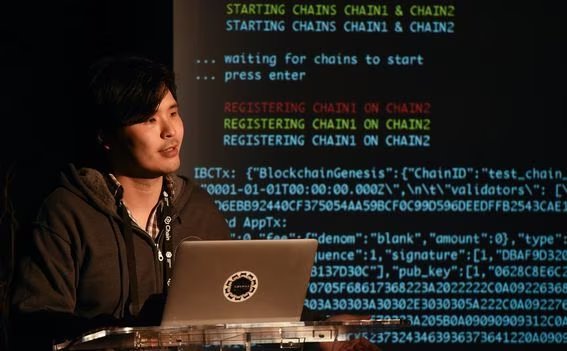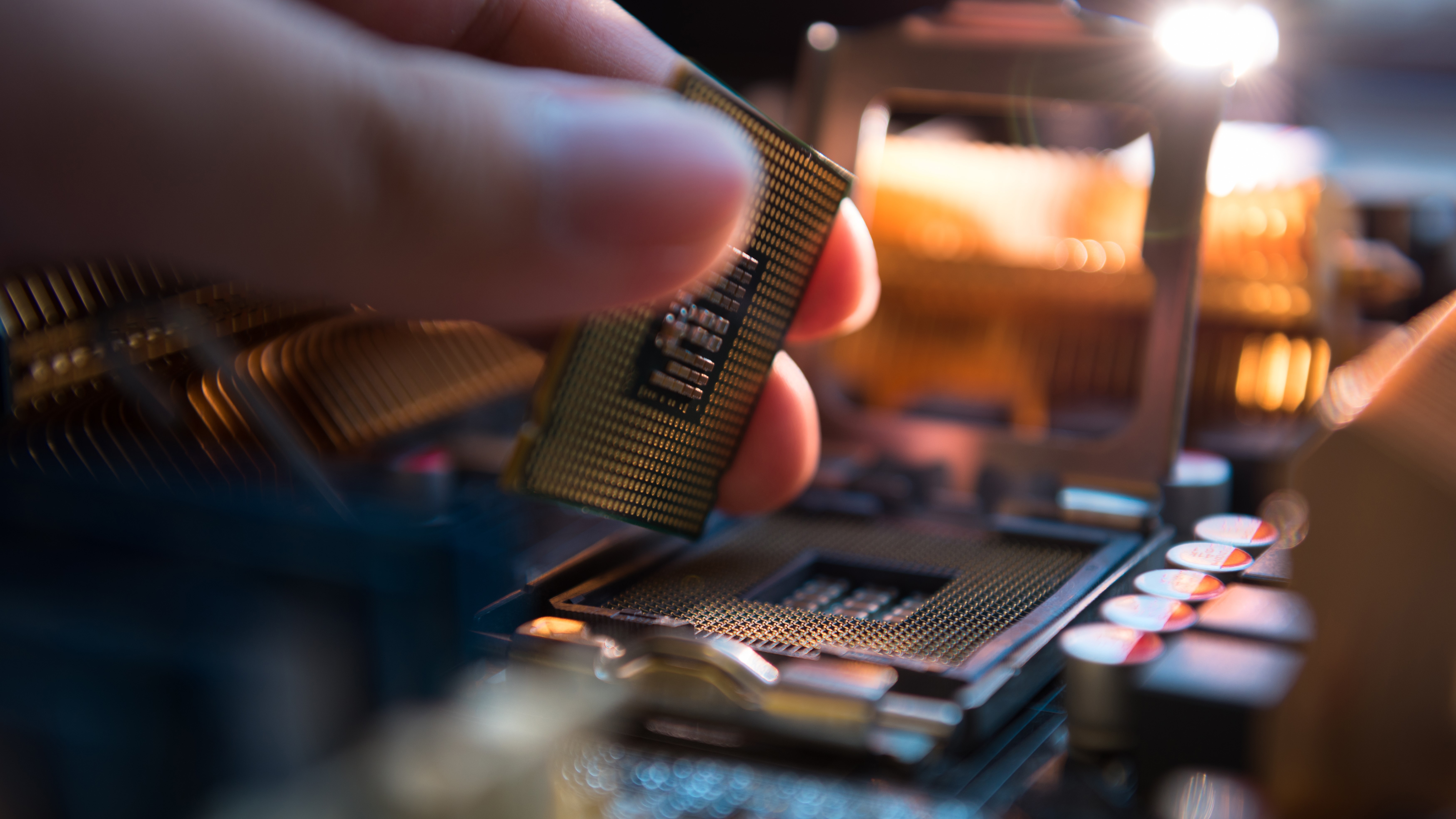TL;DR: With a new update or project being released almost every day, it’s clear the crypto ecosystem is constantly evolving. Dogecoin has gone through a lot of ups and downs to reach the level it’s at today — but it’s just the beginning. Knowing what brought it here and why it was created will lead you to make better decisions when investing or simply using Dogecoin.
In this article, we’re gonna dive into the Dogecoin ecosystem, answer all the $DOGE related questions and even more. Prepare yourself for a history lesson and a journey to the future of Dogecoin!
What is Dogecoin (DOGE)?
Dogecoin is a Layer 1 blockchain created in 2013 by Billy Markus and Jackson Palmer. What started as a meme coin turned out to be one of the most popular cryptocurrencies in the world. The easy-going nature of Dogecoin is contrasted by its underlying technology. Let’s explore what’s under the hood!
Dogecoin network is based on a fork of Litecoin, a more scalable version of Bitcoin. Scalability is defined as the amount of transactions that Dogecoin can process per second, or throughput. Dogecoin has a processing speed of 33 TPS, compared to Bitcoin’s 7 TPS. Litecoin is able to process transactions 7.2 times faster than Bitcoin sharing the same block size of 1 MB.
On average, new blocks on the Dogecoin network are generated about every 2.5 minutes, which is four times faster than Bitcoin, where blocks are mined approximately every 10 minutes. Consequently, Dogecoin transaction throughput is also roughly four times faster than Bitcoin’s.
The consensus mechanism that Dogecoin uses is called Proof of Work. PoW means that Dogecoin gets its security from miners that complete difficult calculations by running a hash algorithm to add the next block.
Early on, Bitcoin mining has turned into a competitive business. Coins were mined using the graphics processing unit, or GPU. But engineers quickly figured they could develop new machines strictly for the purposes of mining Bitcoin. This is how the Application-specific integrated circuits (ASICs) were created.
ASICs outperformed GPUs, as they could mine blocks much faster and get the reward before everyone else. Few people had the knowledge, time, and capital to acquire and maintain ASICs. As a consequence, Bitcoin network has become centralized and exclusive.
Litecoin was developed to use the Scrypt hashing algorithm, which is different from Bitcoin’s SHA-256 hashing algorithm. Scrypt is a memory-intensive algorithm that was designed to deter GPUs and ASICs. The goal was to make Litecoin network more accessible to the people. So it was important for the individuals to be able to mine LTC with their CPUs in the beginning.
In time, Scrypt-capable ASICs were created and now virtually all Litecoin mining is done using this hardware. Due to Litecoin’s use of the Scrypt algorithm, ASIC devices made for mining LTC are more complicated to create and more expensive than they are for Bitcoin.
The concept of blockchains is not new, and Litecoin is one of many such networks. The idea started in 2008 with the release of Satoshi Nakamoto’s Bitcoin Whitepaper. This kicked off the subsequent creation of many different types of networks under the same “blockchain” terminology.
Despite being similar in concept blockchains have all different architectures and use cases. What all have in common — including Litecoin — is that they have to be secure. Security is the ability of a blockchain to prevent attacks and penalize malicious actors. This is usually done through their consensus algorithm and the mechanism they use to reach finality. Finality is achieved when a block has been created and is now immutable, meaning that nobody can change the date inside.
Over time many different mechanism have been designed, ranging from Proof of Work, Proof of Stake to novel ones called Proof of Spacetime. Each one hopes to achieve the best way of securing the network they are built for. As noted before, Dogecoin makes use of the same type of the same consensus mechanism that Litecoin uses, Proof of Work.
Dogecoin is powered by the DOGE token, a central part of the Dogecoin ecosystem. DOGE is an inflationary token due to the way its tokenomics have been planned. This means that new DOGE coins are created with each block and the the supply continues to expand. The Dogecoin inflation rate sits currently at around 3.9% and gets lower every year.
Dogecoin has no maximum amount of tokens that can be created.
Mining, however, is not the only way network participants like yourself can earn more Dogecoin. Read our Dogecoin Mining & Staking guide for exact steps and best methods to earn more crypto like $DOGE right from your home.
When was Dogecoin (DOGE) created?
Dogecoin was created as a satire to the seriousness that was happening in the crypto space back in 2013. If people treated Bitcoin as the holy grail of finance, viciously defending its value from naysayers, Dogecoin was doing the exact opposite — keeping it light and fun.
Jackson Palmer was credited with the idea of Dogecoin as he combined the Shiba Inu meme with the concept of crypto. In its initial stages, Palmer had bought the Dogecoin.com domain and added the coin’s logo with a scattered Comic Sans text.
It was just a joke, and nothing more — no actual cryptocurrency or lofty vision for the project.
Given that there were just 50 cryptocurrencies around at the time, Dogecoin quickly gathered the attention of the crypto community for its comedic value. However, Palmer didn’t actually bring DOGE to reality until a Front Range Community College student motivated him on Twitter. It was then, when Billy Markus contacted Jackson Palmer and offered to develop the cryptocurrency.
Both Markus and Palmer were aware of the rising wave of cryptocurrency, especially Bitcoin, in the early 2010s. Bitcoin was capturing the attention of the tech world and beyond, gradually paving the way for the cryptocurrency revolution.
Around 2010, Markus began engaging with cryptocurrencies. He explored various projects and became an active participant in the crypto community. He experimented with Bitcoin mining and actively participated in related forums. Markus was enthralled by the potential of cryptocurrencies and blockchain technology.
Meanwhile, in another part of the world, Jackson Palmer was closely monitoring the cryptocurrency space. Being an enthusiast of innovative technologies, he found the concept of Bitcoin intriguing. Palmer, with his background in marketing and tech, was able to analyze the market dynamics and foresee the potential for blockchain technology to revolutionize finance and various industries.
Both Markus and Palmer had a profound interest in the emerging crypto landscape, and this marked the beginning of their journey into the world of digital currencies.
In December 2013, the whimsical and somewhat unexpected journey of Dogecoin began. Billy Markus, inspired by the popular "Doge" meme featuring a Shiba Inu dog, envisioned creating a fun, light-hearted cryptocurrency that would appeal to a broader demographic.
The idea struck Markus as amusing and novel. He envisioned a digital currency that could break away from the serious and often complex nature of other cryptocurrencies. Markus believed in the power of community and wanted to make crypto more accessible and enjoyable for everyone, not just tech enthusiasts.
Around the same time, Jackson Palmer, an Adobe Systems employee, made a joke on Twitter about starting a "Dogecoin," combining the then-popular Doge meme with cryptocurrency. The tweet garnered unexpected attention and positive responses, giving rise to the idea of turning this playful concept into a reality.
Upon discovering Palmer's tweet, Markus saw a perfect opportunity to bring his vision to life. He reached out to Palmer, expressing his eagerness to collaborate on this exciting project. Palmer was equally enthusiastic about the idea, and the partnership between Markus and Palmer was formed.
Markus took the lead on the technical side, reconfiguring Bitcoin's source code to turn its user interface elements into the iconic doge meme. Palmer played a pivotal role in marketing and spreading the word about Dogecoin, leveraging his background in marketing to create a strong community around the new cryptocurrency.
Within just a week of Palmer's tweet, the duo officially launched Dogecoin in December 2013. The response from the community was overwhelmingly positive. Dogecoin's appeal lay not only in its playful branding but also in its potential for microtransactions, making it ideal for tipping and small online transactions.
To their astonishment, Dogecoin gained immense popularity within a short period. The community grew rapidly, and the coin's value surged. The playful and engaging nature of Dogecoin appealed to a broad audience, and it quickly became one of the most talked-about cryptocurrencies in the crypto sphere.
In addition to its success, Dogecoin became known for its philanthropic efforts. The community rallied to support various causes and initiatives. They raised funds to sponsor athletes, disaster relief efforts, and more, showcasing the community's compassionate and generous spirit.
While Dogecoin was initially conceived as a joke or meme coin, its impact on the cryptocurrency landscape cannot be underestimated. It highlighted the importance of community engagement, approachability, and fun in the often serious world of digital currencies.
Billy Markus and Jackson Palmer, through Dogecoin, demonstrated the potential for cryptocurrency to transcend the boundaries of traditional finance and reach a wider audience. Their collaboration birthed a unique and influential cryptocurrency that has left a lasting mark on the blockchain space.
Despite stepping away from the active development and involvement in Dogecoin over time, the legacy of Markus and Palmer continues to live on in the cryptocurrency community. Their story showcases the power of creativity, collaboration, and community in the ever-evolving world of blockchain technology.
Who created Dogecoin (DOGE)?
Dogecoin was created in December 6, 2013, by Billy Markus and Jackson Palmer. At the time, Billy Markus was an IBM software engineer in the U.S. while Jackson Palmer was an Adobe software engineer in Sydney, Australia.
Jackson Palmer earned his bachelor of Management & Marketing at the University of Newcastle in 2008. For a brief 7 months, he worked as a marketing analyst at Business Catalyst before he transitioned to Adobe Systems as part of the company acquisition.
Palmer would be promoted to the associate product manager role at Adobe Business Catalyst in 2013, and then get promoted to product marketing manager from 2013 to 2015. His role at Adobe Business Catalyst was to drive engagement of Creative Cloud members. During his time at Adobe, Palmer got a deep understanding of how to grow a company culture and how to optimize the business funnel.
One year after its launch, Dogecoin had already amassed recognition beyond his expectations, but Jackson lost the drive for the project. In June 2014, Jackson took a step back from the r/dogecoin community, although he was still involved in the Dogecoin hackathon in San Francisco.
His words at the time were: “My general policy with Dogecoin is that I'll only be involved while it's fun and light-hearted. The second people start throwing around legal action and acting high and mighty over a dog on a coin, I peace out and move onto something worth my energy.”
Fortunately, the Dogecoin community had developed enough in six months to have its own core developers, which meant that Jackson could focus more on the “fun side” of the meme coin. For the next years, Jackson Palmer grew colder with the crypto community as he continued to climb the corporate ladder at Adobe. In 2021, he was promoted to Sr. Director of Product Management, Growth & Data Science.
Although Jackson was the co-creator of Dogecoin, he didn’t make any money from it: “It was always like a hobby project, like a side project thing. I made a lot of people rich but I didn’t come away with any money. I get to tell people that I created Dogecoin, which is fun.”
As of 2022, his net worth is estimated to be between $1 and $5 million — not bad for a wagie.
The renewed interest in Dogecoin didn’t sit well with the co-founder. Jackson Palmer said that he’s grown weary of having his name dragged into conversations around a token he had helped create over 8 years ago. At the time, he saw Dogecoin as a "hobby' — now he said it's become a nuisance. On the dark side of events, both co-founders had received threats from the community, asking them to do something about the development of Dogecoin.
In the recent years, Palmer has repeatedly come out to say that the crypto has deviated from its fundamental libertarian values and has since being turned into a vehicle for grifting. The Dogecoin co-founder says that cryptocurrencies nowadays attract people under of the mirage of quick gains, but their purpose is to enrich the people at the top.
This was the major reason why he left the r/dogecoin community in the first place, saying that people had the tendency to take over as soon as DOGE was gaining value. Jackson was so outraged by the current state of crypto that in 2022 he created his own podcast called “Griftonomics”, where he discusses the matter at large.
Palmer’s predilection towards marketing was a major catalyst for Dogecoin’s success. He was the one to come up with the concept of “Dogecoin”, but this is just one side of the coin.
Billy Markus was involved in the technical aspect of creating the cryptocurrency.
Born in Oregon in 1983, Billy Markus started out his career as a software engineer at IBM where he had found his new passion: cryptocurrencies. Initially, Billy Markus was working on an existing crypto named “Bells”, based on the Nintendo game Animal Crossing. Inspired by the concept of Bitcoin, his vision was to create a coin that would achieve a larger user base.
Markus reached to Jackson Palmer after seeing the Dogecoin website, and seeing the potential, he ditched “Bells” to focus entirely on developing the technical side of DOGE. Later on, Markus admitted that he had no master plan for the token, and his goal with Dogecoin was to prove himself that he wasn’t a “noob” and he could actually make coins.
Dogecoin's protocol was based on the existing cryptocurrencies Luckycoin and Litecoin, which both use Proof of Work. According to Markus and Palmer, the creation of the actual token took a few hours. Markus humorously stated: "The people after us did exponentially more than either Jackson or I did on the codebase. I think I wrote like 20 lines of code and copied the rest.”
In spite of the popularity of Dogecoin, the crypto market was experiencing a steep decline. According to Billy Markus himself, In 2015, he sold all his DOGE (worth $10,000 at the time) to buy a used Honda Civic.
Reflecting on the situation back then, Markus said: “I gave away and/or sold all the crypto I had back in 2015 after being laid off and scared about my dwindling savings at the time, for about enough in total to buy a used Honda Civic.”
Billy’s luck would turn around years later when the market experienced a reignited interest in Dogecoin. In 2021, the Dogecoin Foundation was re-established and Billy Markus was listed as an advisor. Although he is no longer involved in the development of DOGE, Billy used the momentum to amass +500K followers on Twitter, where he writes under the name Shibetoshi Nakamoto. He has blocked his fellow co-creator Jackson Palmer, citing no reason.
Billy Markus has a net worth is estimated to be around $18 million, thanks to his other investments and professional career. Having returned to his job as an engineer at IBM, he now lives a quiet life outside the Twitter world. Currently, Billy Markus is using the spotlight to promote his own NFT store called Blocky Doge — a series of pixelated Dogecoin NFTs.
How is the Dogecoin (DOGE) token used?
The Dogecoin token is the native token for the Dogecoin network. Most assets in the Dogecoin ecosystem are denominated in DOGE, which makes it the default unit of account.
DOGE is the fuel that powers transactions and block creation on the Dogecoin chain. We sometimes refer to it as “gas.” Its primary use case is securing the network and keeping actors aligned to the same principles. Making a transaction on the Dogecoin network requires a small fee in DOGE, usually around 0.0025 DOGE. Because Dogecoin has a quick time to finality and processes more transactions per second the gas fees quickly add up. This small fee is paid by users and goes to miners for doing their work.
The recent popularity of Dogecoin has attracted many businesses to accept it as a payment method. Now you can pay at a wide range of merchants with DOGE. Some of them include Tesla, Dallas Mavericks, Twitch, Amazon, and many others.
Dogecoin is currently listed on multiple exchanges. The major ones are Binance, Coinbase and Kraken. Mining, however, is not the only way network participants like yourself can earn more Dogecoin.
Read our Dogecoin Mining & Staking guide for exact steps and best methods to earn more crypto like $DOGE right from your home.
Who is developing Dogecoin (DOGE) now?
In 2014, the founders of Dogecoin, Billy Markus and Jackson Palmer, transitioned away from active development, passing the torch to the emerging Dogecoin Core Development team. This new team, consisting of a small group of core maintainers and supported by a growing community of over 40 contributors, took up the responsibility of maintaining and evolving Dogecoin from that point forward.
Parts of the codebase were authored by external developers, making open source contributors a fundamental aspect of Dogecoin's development journey. The collaborative efforts of these developers have been crucial in advancing and securing the Dogecoin network, highlighting the open-source ethos at the core of the cryptocurrency's evolution.
Despite its origins as a light-hearted and playful cryptocurrency, Dogecoin swiftly garnered a massive and passionate community. This community wasn't just about memes and jokes; it showcased a remarkable spirit of generosity and philanthropy. Notably, in 2014, the Dogecoin community rallied to support various causes, raising funds to sponsor the Jamaican bobsled team for the Sochi Winter Olympics and aid in the construction of clean-water wells in Kenya. This demonstrated how Dogecoin could be a force for good, harnessing the collective power of its community for meaningful impact.
While not directly involved in Dogecoin's day-to-day development, two influential figures, Vitalik Buterin and Elon Musk, have impacted Dogecoin's trajectory over the years. Vitalik Buterin, the co-founder of Ethereum, has been known to show interest in and occasionally comment on Dogecoin. However, his involvement has been more aligned with Ethereum's development and ecosystem i.e transitioning Dogecoin from Proof of Work to Proof of Stake, a proposal that to this day remains controversial.
Elon Musk has often mentioned Dogecoin in his social media posts, significantly affecting its market perception and value. Musk's tweets have demonstrated the power of social influence in the cryptocurrency space and how it can drive public interest and participation.
In terms of governance, Dogecoin primarily operates under an informal, decentralized, and community-driven model. It lacks a formal on-chain governance structure where decisions are recorded directly on the blockchain via voting mechanisms. Instead, decisions, updates, and modifications to the Dogecoin protocol are typically proposed, discussed, and decided upon through community consensus on various online platforms, including social media, forums, and developer channels.
While this decentralized approach allows for a wide range of community inputs, it also presents challenges in achieving swift consensus and executing upgrades. Despite this, the Dogecoin community has shown resilience and adaptability, successfully coordinating efforts and maintaining the cryptocurrency's functionality and relevance in the ever-evolving crypto landscape.
For the past eight years, Dogecoin has closely followed the development path of the aging Bitcoin C++/QT desktop wallet, skillfully maintained by the Dogecoin Core dev team. A decade ago, during the early days of crypto, this decision held great merit. However, the landscape has evolved drastically, and what was once a foundational element in the crypto world has fallen behind. Nowadays, most transactions occur on mobile devices, and seamless integration with online retailers has become a priority.
The Foundation (guided by the Trailmap) now works on developing a mobile wallet that can keep up with the evolving technology. Furthermore, Dogecoin Foundation has been pursuing the ability to run light nodes on smart phones.
The trajectory of Dogecoin, from its Trailmap, is expected to take a slightly different road than initially envisioned. In other words, Dogecoin is poised to slowly transition from a memecoin to a legit application layer that can runn dapps.
Is it going to work though? Only time will tell…
What are the latest updates on Dogecoin (DOGE)?
Dogecoin in 2020
In 2020, Dogecoin re-emerged in the mainstream attention after a viral TikTok trend sought to pump DOGE to $1. This movement, often referred to as the "TikTok Dogecoin Challenge," gained significant momentum within the platform.
A quick dive into the Dogecoin TikTok tag unveiled a plethora of user-generated videos, accumulating an impressive viewership of over 5 million. This playful trend ended up shining a bright spotlight on the entire crypto industry.
Back in June 2020, Dogecoin's value danced around $0.0037, reaching its peak at $0.0048. As July began, the price embarked on an exhilarating journey, surging by around 60%. This surge pushed its market capitalization to a hefty $450 million, securing its spot as the 29th largest cryptocurrency.
The TikTok-driven surge around Dogecoin swept many along, regardless of their familiarity with this digital asset or the world of crypto investments.
In one particularly hallucinant video, a TikTok user passionately advocated for investing in Dogecoin, breaking it down into simple terms for those unacquainted with investment. The pitch was straightforward - invest $25, and you could pocket 10,000 shares. And if, by some stroke of luck, Dogecoin hit $1, that's a potential $10,000 win! This persuasive call to action echoed through the digital landscape, amassing a remarkable 45K likes and over 2,400 comments since its Monday release, reflecting the contagious excitement.
TikTok users started creating videos encouraging others to invest in Dogecoin, citing its low price and the potential for high returns if it were to reach $1. Some users went as far as calling it a "get-rich-quick" scheme, sparking a frenzy among younger investors.
A specific video that went viral featured a user stating, "Let's all get rich! Dogecoin is practically worthless. There are 800 million TikTok users once it hits $1, you'll have $10,000. Tell everyone you know." This contributed to a wave of interest and investment in Dogecoin.
However, financial experts and analysts expressed caution regarding the speculative nature of this movement. They emphasized the importance of conducting thorough research and understanding the risks associated with investing in cryptocurrencies. Basically, people were jumping in a crypto trend without having any idea about the concept of market manipulation.
While the TikTok campaign did lead to a short-term surge in Dogecoin's value, it didn't sustain the $1 target. The incident demonstrated the power of viral trends and how bored people were during the pandemic.
Dogecoin in 2021
2021 was Dogecoin’s best year to date, reaching an all time high of $0.73 on May 21. This was heavily influenced by a few key events and updates.
The biggest catalyst was Elon’s aggressive promotion of Dogecoin on Twitter. It started with memes, but gradually it become more serious, to the point where his companies had some sort of connection to the coin.
On May 9, 2021, SpaceX made an unprecedented announcement: they were embarking on a mission to the Moon, a ride paid for entirely in Dogecoin. This marked a historic moment, being the first time a cryptocurrency had funded a space expedition. Elon Musk, confirming the news, took to Twitter to share this exciting development: “The mission, named DOGE-1, was set to be a modest 40 kg rideshare payload on Intuitive Machines' IM-1 mission, scheduled for Q1 2022.”
Following this, on August 14, 2021, the Dogecoin Foundation revealed its revival, proclaiming a renewed commitment to bolstering the Dogecoin Ecosystem and Community, and advocating for the future of the Dogecoin Blockchain. The resurgence of the Foundation came with a prestigious addition to its Board—prominent advisors like Vitalik Buterin (co-founder and inventor of Ethereum) and Jared Birchall (representing Elon Musk) were welcomed aboard, adding to the foundation's momentum.
Another factor was the GameStop saga, when a bunch of Reddit users decided they liked the GME stock and almost short squeezed Citadel Capital. Dogecoin went up 800% on the cold night of January, reaching $0.07.
In April 2021, Dogecoin experienced a surge in value, a wave that swept through various cryptocurrencies. The catalyst for this surge was partly the direct listing of the cryptocurrency exchange Coinbase on April 14, even though Dogecoin wasn't available for trading on that platform. On April 14, Dogecoin reached a milestone by hitting $0.10, and just two days later, it soared to an impressive high of $0.45 on April 16 (a staggering 400% increase within that week).
The trading volume during this surge amounted to nearly $70 billion within the preceding 24 hours. At that juncture, Dogecoin's market capitalization approached an astounding $50 billion, propelling it to the ranks of the fifth-highest-valued cryptocurrency; in the span of a year, its value had skyrocketed by over 7,000%. The burgeoning interest in Dogecoin even caused a hiccup in Robinhood's electronic trading platform on April 15 due to an "unprecedented demand," highlighting concerns from experts about a potential speculative bubble in the cryptocurrency market.
Then, on May 4, 2021, Dogecoin achieved a significant milestone by surpassing the symbolic barrier of $0.50 in value.
Dogecoin in 2022
2022 has been a sobering year for Dogecoin. With the bull market hype fading away, interest in DOGE has gradually dried and many people were left holding the bag. Despite its fall from grace, Dogecoin continued to be in the top 10 cryptos by market cap – only the meme power wasn’t there anymore.
In this crucial moment, the Dogecoin Foundation stepped out and unveiled a much more serious direction for the memecoin. Dogecoin still maintains its LOL attitude, but it has become a lot more serious to millions of people.
First things first, Dogecoin has the same fundamentals as Bitcoin, but it’s better suited to be used as a global currency for everyday use. Developers didn’t shy way from pointing out that Dogecoin has been used by corporations to boost their profits despite the terrific ethos behind the coin. What’s more, Dogecoin earned the goodwill of the world, as it promises the everyday folk a degree of control over their destiny.
Dogecoin needed to make friends with industry, governments, and NGOs of all shapes and sizes to prove its usefulness before it had a chance of potentially taking over the world. This, Dogecoin believed, could only occur through collaboration rather than distrust and pushing people away.
The individuals representing Dogecoin started discussing the “Dogecoin Ecosystem” with various stakeholders. They engaged with and welcomed several notable groups into the Dogecoin space. One such group was Hack Club, a worldwide network of teenagers and young individuals proficient in development and eager to participate in exciting projects. The Foundation, embodying Dogecoin's aspirations, explored various projects with them. Some of these projects were announced, while others were still in progress, underscoring a narrative of ongoing progress and potential. An illustrative project was the recent TeamSeas initiative, where collaboration with talented Hack Club teens brought the Dogecoin Community together for the betterment of the planet.
Additionally, there were interactions with startups and investors, encouraging and engaging them in the development of the next tier of services atop L1. Dogecoin, in this role, supported and mentored, fostering growth and innovation in this burgeoning space. The journey also involved dialogues with governments regarding the practicality of Dogecoin as an everyday currency, a testament to its proactive stance in exploring real-world applications.
Throughout this grand narrative, relationships held significant importance. Dogecoin Foundation sought to establish friendly alliances, exemplified by its engagement with the Ethereum community. This demonstrated an openness to learn from and provide support to other crypto projects. The storyline portrayed Dogecoin as actively working to build a network of partnerships, highlighting its collaborative spirit and the belief that collective endeavors held the key to a brighter and more impactful future.
Overall, the year 2022 has been all about setting development priorities straight and focusing efforts around scaling Dogecoin to a world currency.
Dogecoin in 2023
The current year has been hopeful for Dogecoin. The memecoin remained in the top 10 coins by market cap and the goals set the year before had started to take shape.
On March 25, the Dogecoin Foundation, represented by one of the memecoin’s core developers, Michi Lumin, officially announced the rollout of libdogecoin 0.1.2, a significant upgrade to the Dogecoin protocol. Lumin, sharing the details, emphasized that this update was a major stride aimed at augmenting the functionalities of DOGE as a self-sovereign digital currency.
The latest iteration of libdogecoin brings a series of essential fixes that align with Dogecoin's fundamental principles and beliefs. One of the key introductions in this upgrade is the support for BIP39, a widely adopted standard utilized by Bitcoin wallets and various other wallets to create and restore addresses.
This newfound support for BIP39 now allows for the seamless creation of seed phrases to and from keys. Lumin elaborated on this feature, stating, “libdogecoin now supports the generation of seed phrases to and from keys in many languages. For non-developers, this functionality is available in the included 'such' executable as a utility and can be used to generate mnemonic phrases.”
Further enhancements are encapsulated in the BIP32, BIP44, and SLIP44 standards, respectively.
A notable upgrade in libdogecoin is the capability to generate QR Codes, facilitating their use in mobile applications. This aligns Dogecoin with mainstream protocols where QR Code usage is already prevalent, ultimately enhancing DOGE's functionality as a Proof-of-Work (PoW) protocol.
To underscore the broad-spectrum improvements brought about by this upgrade, Lumin affirmed that the libdogecoin update addresses numerous bugs, making the protocol more adaptable and user-friendly for developers and participants within the ecosystem.
In April 2023, there was another surge in Dogecoin's value, and this time, it was attributed to a playful move by Elon Musk. Musk temporarily changed the logo on the Twitter app to a Doge logo, sparking renewed interest in Dogecoin. However, in June 2023, Musk faced allegations of insider trading from investors, who pointed to a series of stunts, including the logo change, as potential influencing factors.
Dogecoin is in a constant growth cycle, and network participants like us can earn more $DOGE without too much hassle or technical knowledge, right from the comfort of our homes.
Learn how to do that in our Dogecoin Mining & Staking guide, which includes the exact steps and best methods of earning more crypto like $DOGE in 2024 and beyond.



































































